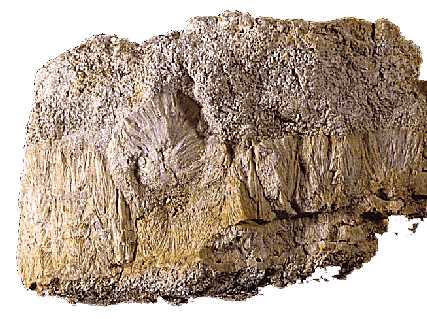Chaetetids
The chaetetids compose a small group of organisms that was most
often presumed to be among the
anthozoan
corals, more specifically allied to the
Tabulata.
However, with the discovery of a living representative, it was learned that
chaetetids are actually sponges.
Previously, chaetetids were known from the
Ordovician to the Miocene. The overall body form varied from flat encrusting to upright
columns. Some achieved a size of over 3 meters. Their fossil record suggests that they
were mostly warm shallow water organisms often associated with photosynthetic algae.
They apparently required hard substrates for settlement and the onset of growth. They
contributed to the development of reefs during the
Paleozoic
and Mesozoic,
both overgrowing and serving as substrate for other reef-associated organisms.

The general
chaetetid growth form can be described as a cluster of closely packed tubes with floors
or tabulae. The rigid skeleton is calcareous. The living chaetetid,
Acanthochaetetes wellsi possesses siliceous spicules
and soft parts that clearly place it within the demosponges. Spicules
are rarely preserved in fossil chaetetids. It is unknown if chaetetids form
a monophyletic grouping, although the hypothesis of monophyly has not
been falsified at this point in time.

Sources:
Vacelet, J. 1985. Coralline sponges and the evolution of the Porifera. In Conway Morris, S., J. D. George, R. Gibson, and H. M. Platt (eds.), The Origins and Relationships of Lower Invertebrates. pp. 1-13. Clarendon Press, Oxford.






